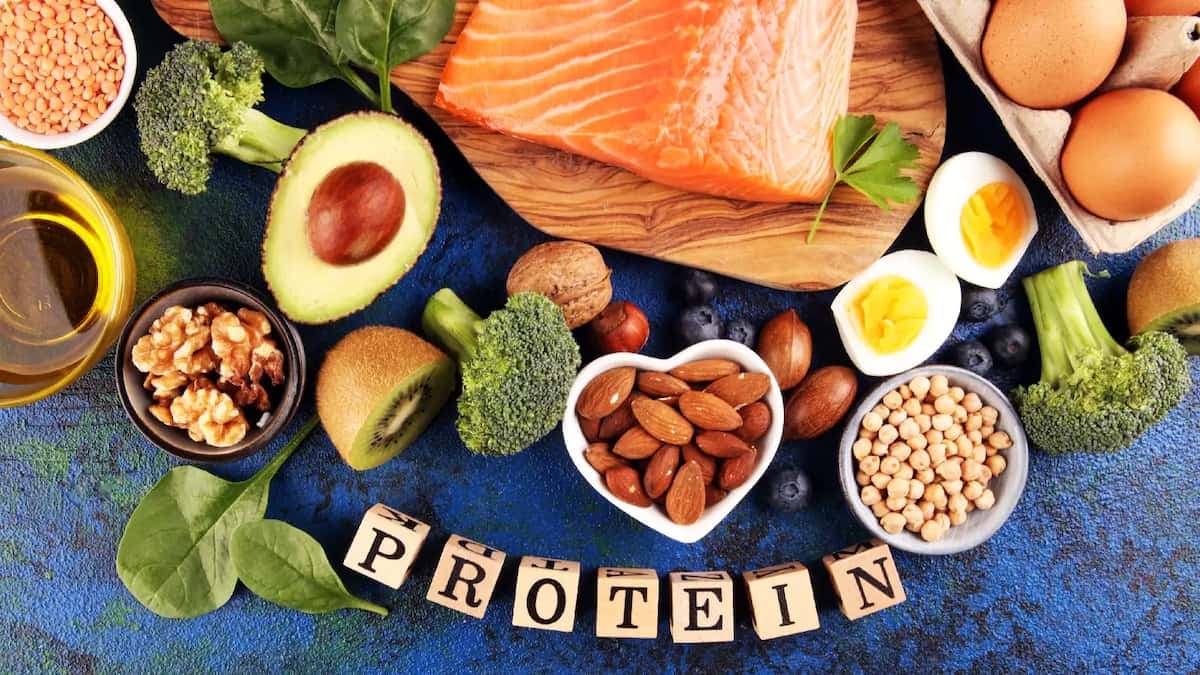Everyone knows the importance of protein, but many people aren’t aware of how much protein their bodies need. As a result, people consume arbitrary amounts of protein on a regular basis without considering their needs. So, how much protein is required? And how does a regular person figure out how much protein they need? Let us tell you about some protein-rich foods.
How much protein do you need?
As per the Indian Council of Medical Research (latest 2020 guidelines), a healthy adult would need about 0.8 to 1 gm per kg of their body weight. In India, some people either over consume protein based on a rough estimate or assume they are lacking, while others barely meet the 0/6 gms per kg body weight guideline.
Proteins, on the other hand, do not follow the ‘more is better’ rule. It’s critical to eat enough to meet one’s body’s needs for growth and maintenance.
What are the benefits of protein?
Protein helps to maintain muscle mass, and eating enough of it can help with weight management, diabetes control, and the amino acid requirements of developing children.
Protein requirements vary depending on a variety of factors such as weight, age, body composition objectives, life stage, medical conditions, and so on.
However, focusing solely on incomplete protein is hazardous. To get the most out of a complete protein, choose the correct combinations, such as grains, nuts, or seeds with legumes.

What are some protein-rich foods?
Protein consumption patterns in India are extremely diverse. There are 20 different amino acids that create different combinations for specific functions in the body. Protein quality varies widely depending on the amount and type of protein consumed; some are better than others. All essential amino acids are abundant in complete proteins such as meat, poultry, and fish (animal sources).
Incomplete proteins from plant sources are lower-quality proteins that are lacking or short in one or more of the essential amino acids. Amino acids are the building blocks of proteins. So, it is important that you choose your source of protein right.
1. Poultry:
Chicken, duck and turkey are the most popular poultry meats. Poultry products have a protein content of 20 grams per 100 grams.
2. Sea food:
Fish is a good source of high-quality proteins with a high biological value.
3. Beef and pork lean cuts:
Animal proteins such as meat, are complete proteins, which means they include all of the important amino acids our bodies require. Animal products are the best sources of high-quality protein.

4. Dairy:
In India, milk from animals such as cows, buffaloes, and sheep is common. Curds, buttermilk, and Greek yoghurt, all of which contain probiotics, are healthy. Whey protein concentrate, isolate, and hydrosylate are all types of whey protein. Casein supplements are also readily accessible.
5. Legumes and pulses:
Black-eyed peas, kidney beans, black beans, lentils, chickpeas, and lima beans are examples of legumes, pulses, and dals. Beans, lentils, and peas are examples of legumes that are high in both fibre and protein. Pea protein isolate and concentrate powders are available for vegans.
6. Seeds and nuts:
Peanuts and peanut butter, almonds or almond powder, walnuts, Brazil nuts, pistachios, cashews, pine nuts, Brazil nuts, and hazelnuts are some of the most regularly consumed nuts. These are protein-rich foods, and even sesame seeds, Chia, and flax seeds are all good protein sources for vegan diets.
7. Mock meats or meat substitutes:
Plant-based goods with a flesh-like texture manufactured from soy protein, wheat gluten, or vegetable substitutes. Some of the people who consume these include;
Lacto-vegetarians are vegetarians who consume animal protein in the form of milk, cheese, and other dairy products. Meat, fish, poultry, and eggs are not eaten by them.
Ovo-vegetarians are vegetarians who eat eggs but not meat or dairy items.

Lacto-ovo vegetarians use dairy products and eggs for protein. No meat, fish, or poultry should be consumed.
Pescetarians eat fruits, vegetables, nuts, legumes, and fish/seafood, but not meat or fowl.
Flexitarian/Semi-vegetarians eat dairy products, eggs, poultry, and shellfish as part of their diet. Red meat should be avoided at all costs. Many individuals are turning to plant-based textural proteins, also known as “fake meats”, as an alternative protein source.


